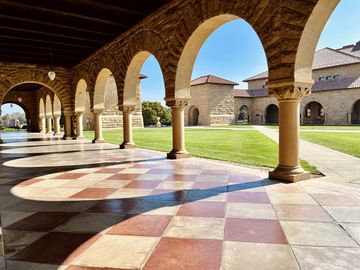Video From Applied Physics/Physics Colloquium: Jason Hogan - "Long baseline clock atom interferometry"
Department of Physics
370 Jane Stanford Way, Stanford, CA 94305
200

APPLIED PHYSICS/PHYSICS COLLOQUIUM
Tuesday, November 1, 2022
3:30 p.m. on campus in Hewlett Teaching Center, Rm. 200
Jason Hogan
“Long baseline clock atom interferometry”
Atom interferometry and atomic clocks continue to make impressive gains in sensitivity and time precision. I will discuss the potential science reach and feasibility of using such precision atomic sensors for gravitational wave detection and searches for dark matter. Excitement for these applications has driven the growth of an emerging sub-field in precision measurement: long-baseline atomic sensing, which aims to scale up “tabletop” experiments to the kilometer-scale and beyond. A key ingredient to this is the development of a new type of “clock” atom interferometry based on narrow-line optical transitions that combines inertial sensitivity with features from the best atomic clocks. This technique is central to the MAGIS-100 experiment, a 100-meter-tall atomic sensor under construction at Fermilab that will probe for ultra-light dark matter candidates and will serve as a prototype for a future gravitational wave detector targeting the unexplored “mid-band” frequency range that is optimal for multi-messenger astronomy. I will also present recent results toward enhancing sensitivity to the required levels by increasing the enclosed interferometer space-time area. Using Floquet modulation of the atom-light interaction, we realize clock atom interferometers with pulse fidelities exceeding 99.4%, allowing for a record-setting momentum separation between the interferometer arms of over 400 ћk.